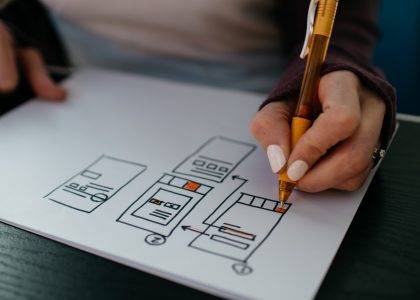When starting a business, one of the most important skills and processes to learn is project management. Projects are the lifeblood of any business because they propel it forward, allowing it to grow, gain customers, and make money.
However, when creating projects, you must have a starting point. A hazy idea and a budget will not suffice — you must understand the ins and outs, timelines, objectives, results, and financing for a project to not only get off the ground but also be successful.
A Project Design Overview
This overview will give you the lowdown on everything you need to know about this critical process when developing and managing your projects.
What Exactly Is Project Design?
It is a necessary early process in project management that brings your project to life. It is known as the project’s starting phase because without it, you don’t have the tools or the blueprint to get the project started.
During this phase, you plan all of a project’s key features, success factors, major deliverables, structure, and other details. Typically, during this phase, you will create one or more designs that will be showcased and later used to achieve your projected goals. Because of project design, stakeholders are able to select the best design for project completion, making the entire process smoother and easier for the entire team.
During this stage of project management, it is common to generate and test a variety of ideas, including:
Placement of trees
Screen designs in HTML
Images of sketches and doodles
Photographic impressions
Flowcharts \sPrototypes
and a lot more
What Is the Importance of Project Design?
It is essential in project management because it handles all of the minor details that are critical to the overall success of the project.
This phase of the project will determine who is in charge of identifying, describing, and completing the project. Design thinking is an important practice during this stage for effective project management later on. Design thinking is a useful problem-solving method that can be divided into three stages: collaboration, innovation, and acceleration.
As with any project, having a plan for how you want it to go is essential for smoother execution and a higher chance of success. With this in mind, it’s useful to think of PD as a planning or brainstorming session during which you create a blueprint for how things should go. Your outline or blueprint should include the following elements:
Budget projections
A description of the project
The organization or person in charge of completing the project
Outcomes and objectives, as well as when they should be achieved
Major deliverables, success criteria, evaluation criteria, and products
The PD phase should also be a collaborative effort. Those involved should understand what they’re doing, as well as when, how, and why they’re doing it. Being fully informed about a project, especially at this early stage when things may change, allows the team to work more effectively together, exchange ideas, and stay on top of their tasks.
Uses for Project Design
It has a variety of applications in project management. These are some examples:
Developing Specific Goals
Keeping a project clear and linear can be difficult, but project design can help. When you know what you want to accomplish, you’ll have a better idea of how to get there and are more likely to succeed!
Evaluating Potential Risks
It should include a thorough examination of all potential risk factors. A thorough risk assessment gives you a better chance of dealing with problems when they (inevitably) arise. You can’t plan for everything, but you can monitor and manage minor annoyances to keep your project timeline on track.
Increasing the Probability of Achieving Milestones and Goals
It also increases your chances of meeting your milestones and objectives because it is all about proper planning. When you have a plan, you have a clear path to follow, which allows you to prioritize tasks and handle them in the most efficient manner possible so that you can move forward.
Improved Communication
Planning is an excellent way to improve communication and expectations. When your team understands what is expected of them, they are more likely to pay attention to details, complete specific tasks, avoid risks, and stay on track. Having an accessible, written project design keeps everyone in the loop and provides your team with something to refer to at each stage.
Identifying Task Requirements
A project design plan will also assist you in identifying task dependencies. During planning, you’ll discover which tasks must be completed before moving on to the next. This helps to keep the project organized and ensures that each task has everything it needs to be completed effectively and correctly.
How to Make a Project Plan
Creating a PD is a lengthy process, but it can be divided into seven steps. Take the following steps to get your project started:
Define Your Project Goal: At the start of your journey, sit down with your team (employees, partners, stakeholders, etc.) to define your project’s main outcome. Consider how realistic it is, how attainable it is, and whether you have the necessary resources.

Determine Outcomes and Objectives: This is where project management really takes off. After you’ve defined your goal, you must consider how you intend to achieve it. This is where project objectives come in to help your team understand the how, what, when, where, and why of these outcomes. During this stage, keep the SMART acronym in mind.
Get Rid of the Wrinkles: Any risks you’ve identified, constraints that will impede your progress, and assumptions that may get in the way of your project are all examples of wrinkles. You understand the standards that must be met, the laws that must be followed, the resources, tools, and technology that will be required, and how to obtain them.
Prepare a Visual Aid: Because many people learn visually, preparing a visual aid can help. You’ll be using graphs, flowcharts, and sketches during this design stage, so make the most of them.
Determine Your Budget: This step determines whether or not your project is feasible. You don’t want to be underfunded, so consider the costs, income, and any extras that may arise from your project.
Determine the Approval and Monitoring Processes: As the picture of your project becomes clearer, you must decide how you will measure its success. Make a list of the criteria you’ll use to determine whether your outcome, deliverables, and final products are what you expected. This list is subject to change and expansion, but remember to stick to some fundamentals that your project must meet.
Make Use of Appropriate Design Documentation: All project information must be saved and stored in proper documentation. Certain project management software is suitable, but you could also use something as simple as a work chart, Gantt chart, or project charter. Documenting project design is just one more way to stay organized from the start and keep your project on track.
With PMP Certification Training, you will be able to master project design.
PMP certification is the gold standard for project managers. The PMP Certification Training Course from SPOTO Learning covers the most recent best practices from the PMBOK Guide and aligns with the most recent PMP Examination Content Outline. Enroll today to learn from experts and pass the PMP exam on your first try.
The comprehensive PMP course covers new project management trends, emerging practices, change considerations, and the core competencies required of today’s project management professionals.





